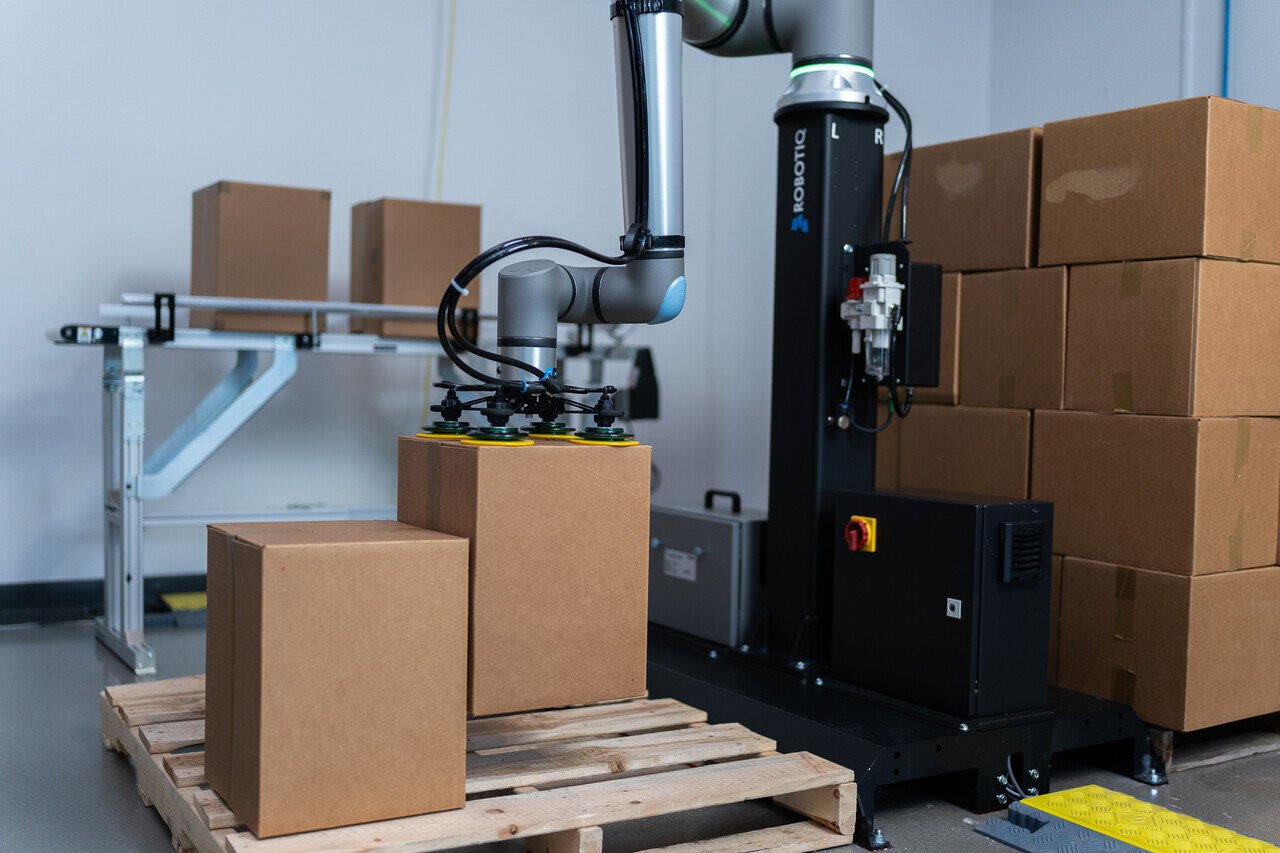
In today's fast-paced industrial landscape, efficiency and precision are paramount. One technology that has significantly reshaped warehouse operations is robotic palletizing. This advanced method of palletizing not only streamlines the process but also enhances productivity and reduces operational costs. Palletizing is an important yet often overlooked process in manufacturing. The consolidation of packaged goods or products onto a pallet is critical for efficient transportation, although this repetitive and strenuous task can cause safety concerns for workers. Continuous pallet stacking and heavy lifting can often lead to injury, back pain, and even costly workers' compensation claims.
Robotic palletizing systems have reshaped this previously manual process. This advanced method of pallet stacking not only streamlines the process but also enhances productivity and reduces operational costs. In this blog, we delve into what robotic palletizing entails, how it works, and why it's the optimal choice for modern warehouse needs.
What is Automated Palletizing
Automated palletizing refers to the use of machinery or robots to stack and arrange products onto pallets. This automated process replaces traditional manual labor, offering numerous advantages in terms of speed, consistency, and safety. By automating palletizing tasks, companies can achieve higher throughput, optimize warehouse space, and maintain product integrity throughout the handling process.
How Robotic Palletizing Works
Robotic palletizing utilizes robotic arms equipped with specialized end-of-arm tools (EOAT) to pick up products from a conveyor or production line and place them onto pallets in a predefined pattern. The process typically involves several key steps:
-
Product Recognition and Orientation: Advanced vision systems or sensors identify the size, shape, and orientation of incoming products on the conveyor.
-
Picking: The robotic arm uses its EOAT to grasp and lift products from the conveyor, ensuring a secure grip to prevent damage during handling.
-
Layer Formation: Once products are picked, the robotic system arranges them into layers according to a predetermined stacking pattern. This can include interlocking or alternating product orientations to maximize stability.
-
Pallet Stacking: After completing a layer, the robotic arm places it precisely onto the pallet. The process repeats until the pallet is fully loaded or reaches a specified height.
-
Wrapping and Transport: Optionally, robotic palletizing systems can integrate pallet wrapping machines or autonomous mobile robots (AMRs) to transport pallets to their designated storage or shipping area.
.jpg?width=800&height=533&name=large-DSC05368%20(1).jpg)
Benefits of Choosing Robotic Palletizing for Warehouse Needs
Enhanced Efficiency and Productivity
Robotic palletizing operates continuously without breaks, significantly increasing throughput compared to manual methods. This efficiency allows warehouses to handle higher volumes of products within shorter time frames, supporting just-in-time inventory management and fulfillment operations.
Improved Workplace Safety
By automating the heavy lifting and repetitive tasks involved in palletizing, robotic systems reduce the risk of workplace injuries caused by manual handling. This improves overall workplace safety and reduces workers' compensation claims associated with lifting-related injuries.
Consistent Quality and Precision
Robotic palletizing ensures consistent stacking patterns and precise alignment of products on pallets, minimizing errors and optimizing pallet space utilization. This consistency reduces product damage during handling and transit, enhancing overall product quality and customer satisfaction.
Flexibility and Scalability
Modern robotic palletizing systems are designed to handle a wide range of product sizes, shapes, and weights. They can adapt to varying production demands and accommodate changes in product configurations without requiring extensive reprogramming or downtime.
Cost Efficiency
While the initial investment in robotic palletizing systems may be higher than traditional methods, the long-term cost savings are substantial. Reduced labor costs, increased operational efficiency, and minimized product damage contribute to a rapid return on investment (ROI) for businesses adopting this technology.
.jpg?width=800&height=536&name=large-_RD080N_-_staged_photo_-_E_%20(1).jpg)
How to Get Started
NEFF Automation understands the complexity of implementing an all new robotic system as there are many factors to consider before getting started. We offer free consultations and on-site visits determine the best solution for your palletizing process. Contact us today to start automating your palletizing process!

